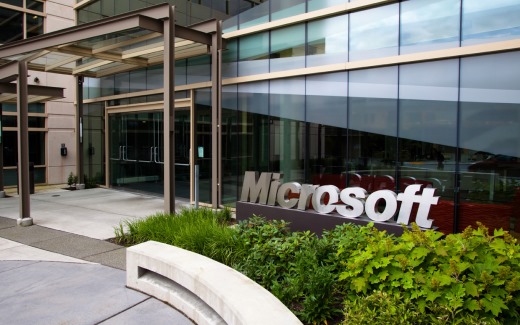The bull market is nearly six years old, and investors have to be wondering what to think with the stock market at current valuations. In 2014, the Dow Jones Industrial Average rose 7.5% and the S&P 500 Index rose 11.4%. Those index performances do not account for individual stock dividends. Microsoft Corp. (NASDAQ: MSFT) closed out the year 2014 at $46.45, for a gain of 27.6%, including its dividend adjustments.
24/7 Wall St. has undertaken a bullish and bearish case to evaluate both sides of the coin and see what lies ahead for Satya Nadella and friends in 2015. One key consideration for the year ahead is that Microsoft is in a very different place than it was a year ago. Nadella is in firm control of the company — Steve Ballmer is just a basketball team owner now — and the direction of the company is changing.
The stock had a 2014 trading range of $34.63 to $50.05, and the consensus analyst price target of $49.84 would imply upside of 7.3% this year. Then there is the dividend yield of 2.6% to consider, which makes for nearly 10% in total returns if the analyst are correct.
Investors coming into Microsoft now have to not just consider that the software giant has a market cap above $380 billion. The other thing to consider was that the breakout above $40 in 2014 put Microsoft at a high not seen since the old tech bubble from the late 1990s and 2000.
ALSO READ: The Bullish and Bearish Case for IBM in 2015
With CEO Nadella’s plan underway, there are still many questions about the future of Microsoft’s structure. Will Xbox and the media/entertainment assets remain a part of the company? What are the plans for MSN? Will Microsoft dominate the cloud and mobile efforts? What efforts will be made to keep the Windows users staying loyal and using Windows in the years ahead? And what about Microsoft’s move into tablets and smartphones? What about the Yahoo! partnership? And what about Skype and a dozen other efforts?
It turns out that jettisoning support for Windows XP was the right move. Upgrades happened at the enterprise level, although apparently more into Windows 7 than Windows 8. The big question is what happens with the next launch of Windows 10, which skips “9” if you are into technical counting.
After a dividend-adjusted performance of 27.6% in 2014, Microsoft’s total upside this year, with the dividend included, is expected to be another 9.9% or so. Here is what is so funny about Microsoft’s 27.6% gain in 2014 — analysts and investors a year ago were faced with the Ballmer regime, and our 2014 bullish and bearish analysis indicated that the analysts were looking for Microsoft shares to lose 2.6% in 2014. Not only did they miss the gain a little, but Microsoft was one of the best-performing Dow stocks of 2014 — just like Intel Corp. (NASDAQ: INTC), and we ran the same bullish and bearish analysis for Intel in 2015 as well.
Nadella could take on an activist investor mentality to please investors while he tries to steer the company in the direction he wants. What if Microsoft hikes its dividend much more, or what if it never undertakes a colossal stock buyback plan that many have hoped for? That would give Nadella enough cover to go out and take his time on whatever focused direction he chooses.
ALSO READ: The Bullish and Bearish Case for Cisco in 2015
In addition, the software and technology giant is also among the world’s top spenders on research and development. This is supposed to bode well for long-term investing strategies.
Microsoft shares were up slightly after the start of 2015. Revenue is expected to be up more than 10% this fiscal year, slowing to almost 6% next year. After shares closed out 2014 at $46.45, the highest analyst price target is all the way up at $58 now. The lowest analyst target is supposedly still down at $34. What investors have to understand is that analysts remain incredibly mixed on Microsoft. With Nadella’s first year as CEO being a major stock recovery, now investors will have to see how the execution performs in the next 12 to 24 months.
Thank you for reading! Have some feedback for us?
Contact the 24/7 Wall St. editorial team.



